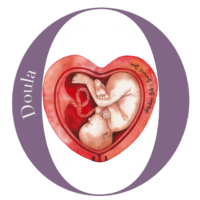Medication can help stimulate labor, and allow you to birth your baby.
These are a few common medications that are used to help deliver miscarried babies, and they may be given separately or in conjuction with each other:
- mifepristone
- misoprostol
- methylergometrine (methergine)
Mifepristone blocks a hormone (progesterone) from completing its pregnancy function of supporting the uterine lining that the baby has been growing in. This will stop your body’s efforts of sustaining the pregnancy. In some cases, this will be enough to trigger “permission” to your body to begin expelling the placenta and delivering your baby.
Misoprostol (a prostaglandin) causes your uterus to contract, so that your baby can be delivered. “Cytotec” is one prescription name used, and misoprostol is said to have about an 80-90% effectiveness rate in delivering miscarried babies and completely expelling all of the placenta pieces.
Methergine helps to control excessive bleeding and can cause your uterus to contract, so that your baby can be delivered.
You may be asked to stay at the hospital to deliver your baby, or you may be permitted to deliver your baby at home. This will depend on the age of your baby, and other factors including your hospital’s policies.
Using labor stimulating medication to help with the delivery of your baby in early pregnancy is generally considered a medically safe approach, one that doesn’t have the possible adverse side effects as more medically involved births. In rare instances, medication does not deliver the entire placenta, and more medically assisted support (D&C) may be needed to help completely deliver the placenta.
When using a labor stimulant to help in the delivery of a very young baby, you should expect to see a heavier blood discharge than your menstrual period, and possibly small tissue-like pieces of uterine lining. Your baby’s placenta, as it detaches from your uterine wall, is very soft and will most likely break into smaller pieces. By the eighth week of pregnancy, the placenta is about the size of a peach, and by the twelfth week it’s about the size of a pear, and so the pieces as it is delivered may roughly be the size of grapes.
Your doctor will discuss with you the side effects and warning signs to look out for when taking induction medication, including fever, too much bleeding (hemorrhage), and the amount of time it should take to complete the entire process.
Generally, you will probably be cautioned that filling a regular-absorbancy maxi pad sooner than one hour, at any time, is cause of concern; immediately postpartum (that is, right after the baby is born), generally speaking you should not fill a regular-absorbancy maxi pad sooner than a half-hour in the first hour (so, you can go through 2 pads in the first hour postpartum), as it is common to experience some increased bleeding at the actual time of delivery.
Besides medication to help stimulate labor, other options to assist in the dilation of your cervix may include seaweed laminaria or the use of a Foley catheter. The Foley catheter (sometimes called Foley ball or bulb) will manually dilate your cervix; this is not a medication but is instead a tool/instrument. Your doctor will insert the Foley into your vagina and the process can be uncomfortable but should resemble a vaginal exam. The ball has a small tube at the end of it. After the ball is in place, the doctor will fill up the ball like a balloon. The sensations from the Foley vary to feeling bloated, crampy, to a feeling of having tetanic (constant) contractions. As you dilate large enough, the Foley will fall out. Each of these options can help dilate your cervix to approximately 3 or 4 centimeters, which should be enough for early pregnancy loss. Pregnancy losses that occur later in pregnancy may be supplemented by the use of Pitocin to continue to dilate the cervix for birth.
Your doctor will discuss these options with you according to your unique situation.
If at any time you fill a maxi pad sooner than a half hour, experience dizziness, tingling in your hands or feet, or a racing heart (or any of these even with light bleeding), you should consult a medical professional immediately.
If you are hoping to be able to find and identify your baby, the chances are increased if you have a general understanding of what to expect to find. The following links will take you to information on the stages of development and the size of the baby.
The induced birth of your miscarried baby can be experienced more positively by incorporating your own birth plan.
How far along are you?
- 4 weeks
- 5 weeks
- 6 weeks
- 7 weeks
- 8 weeks
- 9 weeks
- 10 weeks
- 11 weeks
- 12 weeks
- 13 weeks
- 14 weeks
- (if it’s not listed, please click on gestational age and scroll down to your baby’s age to learn about what to expect your baby to possibly look like at delivery)












